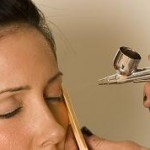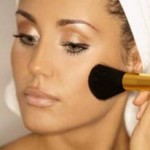Permanent makeup appeared as a natural process in the field of “BEAUTY”, to help with medical problems of aesthetic and plastic surgery and as a result has gained a respected place. What are permanent make contributions to health services?
The introduction of pigment in the skin (PIGMENTATION) is a process that appeals more and more women, especially for these areas: eyebrows, lips and eye features.
In the last two years have seen a growth of knowledge, experience, but also the emergence of a sophisticated technology in this specific area.
All this led to a significant increase of these services among women aged between 30 and 60 years,
What we can “correct” with permanent makeup?
• Scars left after facelift
• Nipple reconstruction surgery after amputation of the breast.
• Construction of new lines of lips.
• Hiding spots by introducing a pigment in their area.
• Complementing the face (eyebrows) for women who have undergone a process of chemotherapy and radiation, in places that hair never grew .
• Coloring the iris (the cornea) for those suffering from blindness, and the pupil if is white.
8 recommandations for permanent makeup
Permanent makeup become increasingly more popular because of its ability to provide a neat and decent arranged throughout the day, free of any effort.
It is important to remember that permanent makeup can be a dangerous process. It can cause damage and may have adverse effects if you use some toxic substances.
The eight recommendations in choosing cosmetologists:
1. It is important to choose only professional beauticians with relevant studies in the field, with recommendations from satisfied customers.
2. There is a question concerning the process itself. If you are promised that the procedure will terminate after a specific number of treatments and then are you are asked to repeat treatments, … ..
3. Treatment for permanent makeup needs to last one hour and no more.
4. Permanent makeup, require beautician to mark correctly by stretching your lips. Otherwise the result obtained will not be successful. Additionally beautician must know if the client suffers from a skin disease (eg herpes).
5. During line drawing eye of higher and lower sites, the needle should be moved from outside to inside the eye and not vice versa.
6. Check the level of hygiene and sterilization of equipment and related accessories.
7. Each treatment requires a new and sterile needle.
8. Beautician must know the client’s medical history, to determine its sensitivity to cosmetic chemicals



